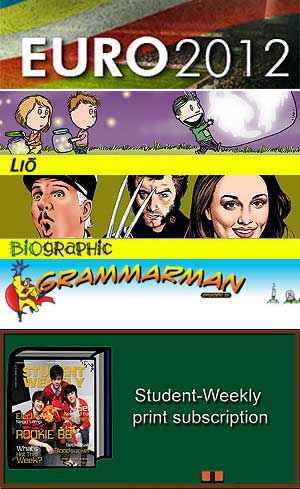Pay less tests

SW looks at other options
By Itsarin Tisantia
Photos by Bangkok Post and AP
Did you know
Established in 1917, Chulalongkorn University is the oldest university in Thailand.
Graduate students who wish to pursue higher education and high school students applying for international programmes at many local and international universities in Thailand need to submit an English language test score.
Instead of paying around 6,000 baht to take the TOEFL (Test of English as a Foreign Language) or the IELTS (International English Language Test System), Thai students have more economical English test options, such as the CU-TEP (Chulalongkorn University Test of English Proficiency) and TU-GET (Thammasat University General English Test). Both the CU-TEP and TU-GET scores are accepted by many universities nationwide.
ECONOMICAL OPTIONS
Those interested in taking the CU-TEP or TU-GET can make online registrations at www.atc.chula.ac.th for taking the CU-TEP and http://litu.tu.ac.th/tuget/login.aspx for the TU-GET.
For more information about the tests, students can also contact the test providers, Language Institutes of Chulalongkorn and Thammasat Universities, at www.culi.chula.ac.th and http://litu.tu.ac.th, respectively.
The CU-TEP and TU-GET are both open for the public to take the tests every month, or around 12 to 13 times per year. The fees for taking CU-TEP and TU-GET are 600 and 500 baht, respectively. Students are advised to check the test schedules in advance because the booking date, test date and payment period are fixed for each month.
CU-TEP BREAKDOWN
Although the CU-TEP and TU-GET are both designed to assess English language skills prior to studying for a university degree, the two tests are somewhat different.
The CU-TEP comprises three sections, namely listening (30 items), reading (60 items), and writing and grammar (30 items). The listening part, which takes 30 minutes, is subdivided into short dialogue, long dialogue and monologue sections. The writing and grammar part, which also takes 30 minutes, focuses on grammatical error detection. The reading part, which takes 70 minutes, is subdivided into cloze test, short text and long text sections.
The CU-TEP takes 160 minutes in total, with a full score adding up to 120 points from 120 test items.
TAKING THE TU-GET
The TU-GET has three major parts — grammar and structure, vocabulary, and reading comprehension. The first part, which tests grammatical knowledge, consists of 13 items of grammatical error identification and 12 items of sentence completion.
Part two is the cloze test, featuring 13 items, and the synonym test, made up of 12 items. The third part focuses on reading comprehension, with 50 multiple-choice questions. The TU-GET takes three hours, with a full score of 1,000 determined from 100 items.
“The most difficult part of the TU-GET is the vocabulary,” former Thammasat University graduate Ittipol Jungwatanawon said. “I suggest reading a wide range of academic texts before taking the test.”
TEST TIMES
Those taking the CU-TEP need to fill in each answer sheet and return it within specified time frames.
Unlike the CU-TEP, the three parts of the TU-GET are combined into one test paper, which allows examinees to manage the three-hour test period in their own individual ways.
Vocabulary
- submit (v): to give a document, proposal, etc. to somebody in authority so that they can study or consider it
economical (adj): providing good service or value in relation to the amount of time or money spent
fixed (adj): not able to be changed
breakdown (n): detailed information that you get by studying a set of figures, etc.
assess (v): to make a judgement about the nature or quality of something
subdivide (v): to divide something into smaller parts
dialogue (n): conversations in a book, play, or film
monologue (n): a long speech by one person during a conversation that stops other people from speaking or expressing an opinion
cloze test (n): a type of test in which you have to put suitable words in spaces in a text where words have been left out
range (n): a variety of things of a particular type



